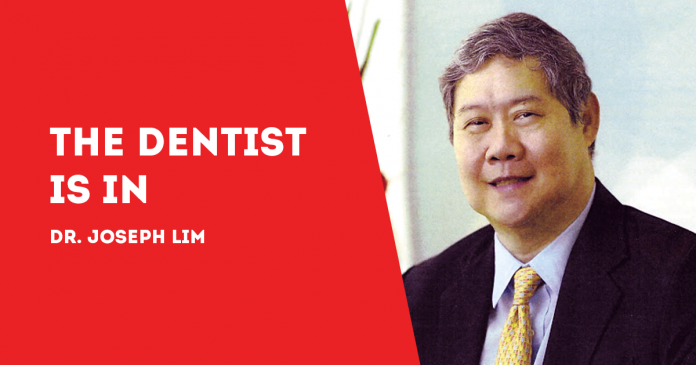
(By Dr. Joseph D. Lim and Dr. Kenneth Lester Lim, BS-MMG, DDM, MSc-OI)
PEDIATRIC pandemic pain.
That’s what it’s called, following two years of lockdowns that made it difficult for children to see dentists and for dentists to check up and treat pediatric oral health issues.
These issues involve tooth decay and cavities, as well as the more serious conditions that may even require surgical procedures.
It’s also called pediatric hesitancy, and it involves parents. Even when dental offices reopened after the lockdowns, parents were reluctant to visits the dental clinic for fear that the COVID virus could be lurking somewhere in the next corner.
Those fears, although justified, are mostly unfounded. Dental clinics have been refurbished to follow the protocols issued, for example, by the Philippine Dental Association (PDA).
The PDA continues to require dental clinics to follow strict pandemic protocols, like social distancing, hygiene and the wearing of masks in enclosed places. Even magazines and newspaper have been banished from clinics because these are shared by patients and could be potential pathways of infections.
Members of the PDA and their dental staff are required to wear protective clothing, to shield the dentist, the dental assistant and the patient from infection.
Even today, dental clinics operate at reduced capacity because dentists avoid crowded spaces. This means less routine checkups and cleanings as well as preventive care like fluoride applications and sealants.
In the United States, about a quarter less children visited the dental clinic in 2020 when compared to the previous pre-pandemic year, according to a study published in the Journal of the American Dental Association.
And while we don’t know the numbers in the Philippines, Filipino children certainly missed dental appointments during the lockdowns.
That means more cavities and more tooth decay left untreated.
And that’s unfortunate.
According to the Department of Health (DOH), 97 percent of six-year-old children suffer from tooth decay. That means that nearly all Filipino children age six suffer from dental caries or tooth decay.
In fact, according to the Department of Education, the Philippines is among the countries with the highest prevalence of dental caries in children. The dire consequences: toothache, infections, dental impairment, impacted nutritional intake, and school absenteeism.
The impact carries well into adulthood. The DOH estimates that more than nine in 10 or 92.4 percent of Filipinos have dental caries or tooth decay.
***
Dr. Joseph D. Lim, Ed. D., is the former Associate Dean of the College of Dentistry, University of the East; former Dean, College of Dentistry, National University; Past President and Honorary Fellow of the Asian Oral Implant Academy; Honorary Fellow of the Japan College of Oral Implantologists; Honorary Life Member of the Thai Association of Dental Implantology; and Founding Chairman of the Philippine College of Oral Implantologists. For questions on dental health, e-mail jdlim2008@gmail.com or text 0917-8591515.
***
Dr. Kenneth Lester Lim, BS-MMG, DDM, MSc-OI, graduated Doctor of Dental Medicine, University of the Philippines, College of Dentistry, Manila, 2011; Bachelor of Science in Marketing Management, De la Salle University, Manila, 2002; and Master of Science (MSc.) in Oral Implantology, Goethe University, Frankfurt, Germany, 2019. He is an Associate Professor; Fellow, International Congress of Oral Implantologists; Member, American Academy of Implant Dentistry and Fellow, Philippine College of Oral Implantologists. For questions on dental health, e-mail limdentalcenter@gmail.com./PN



